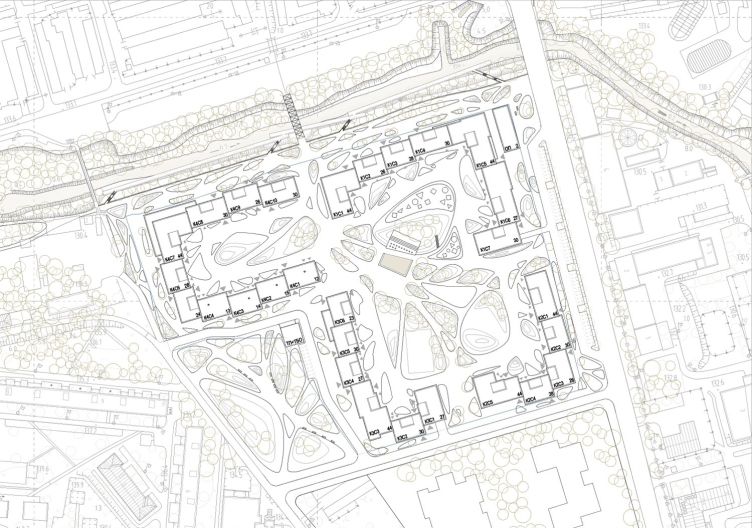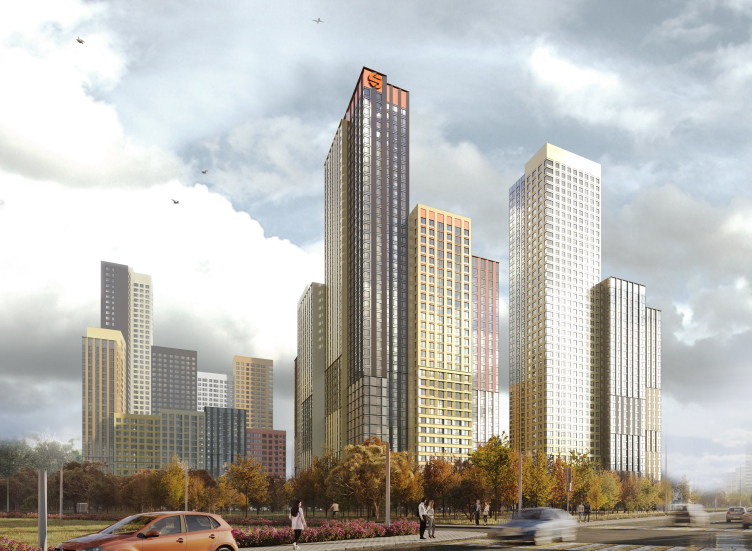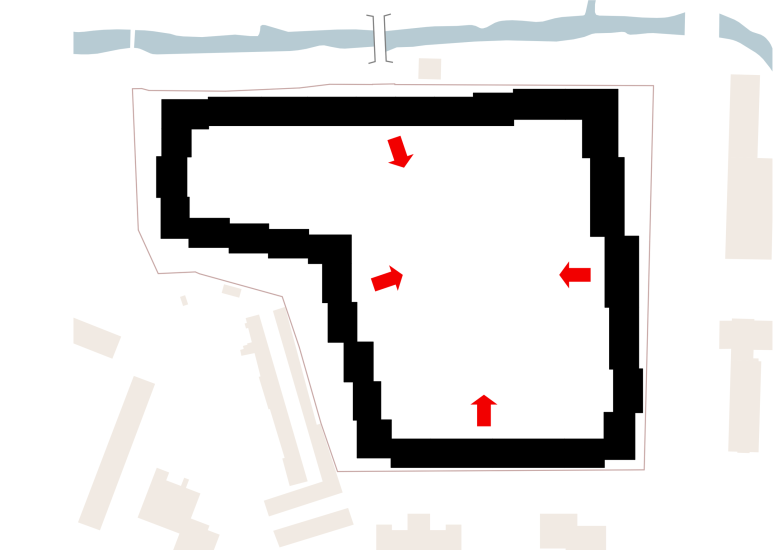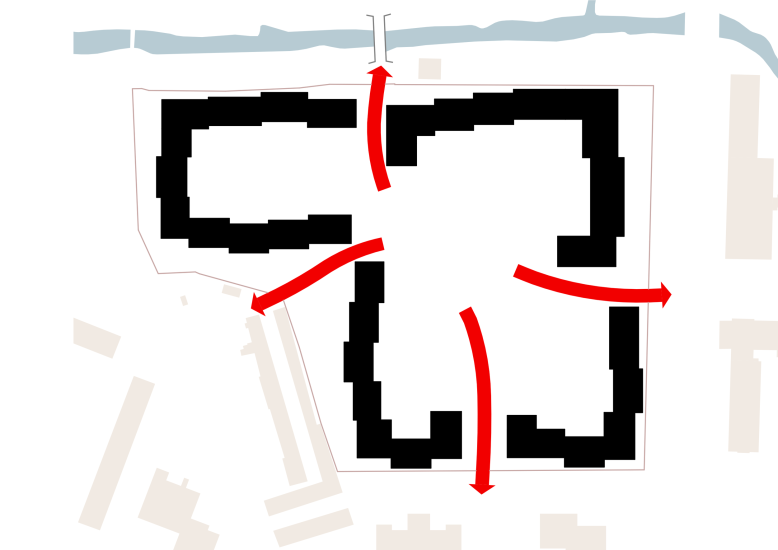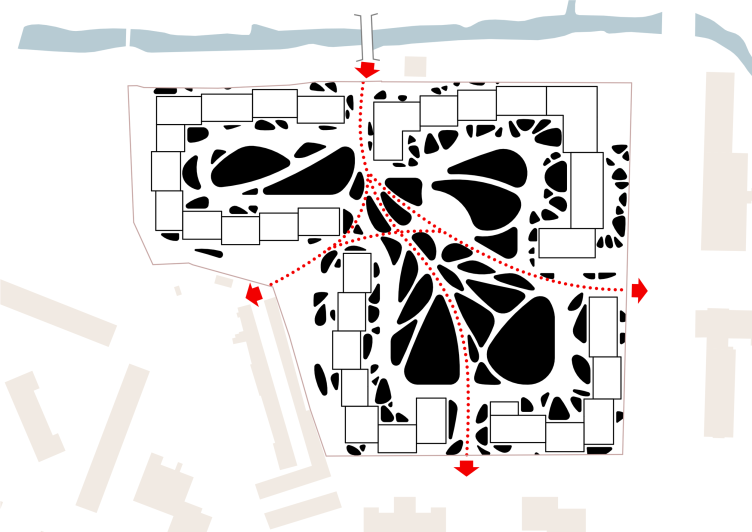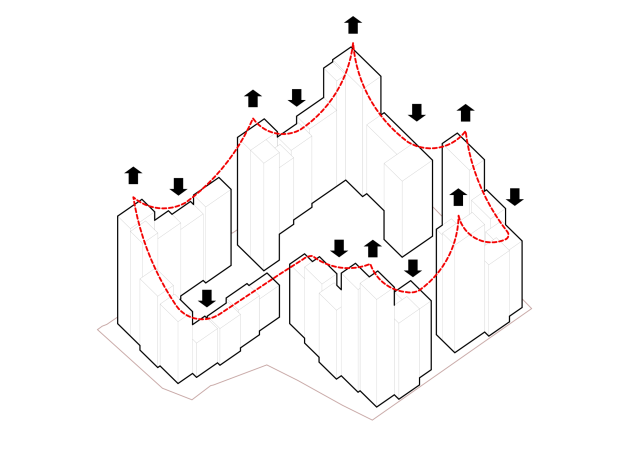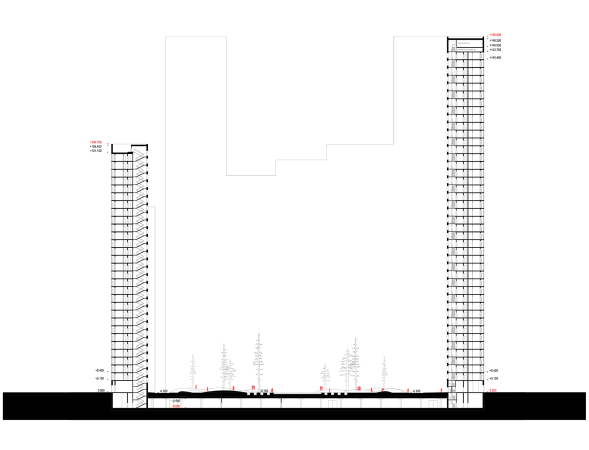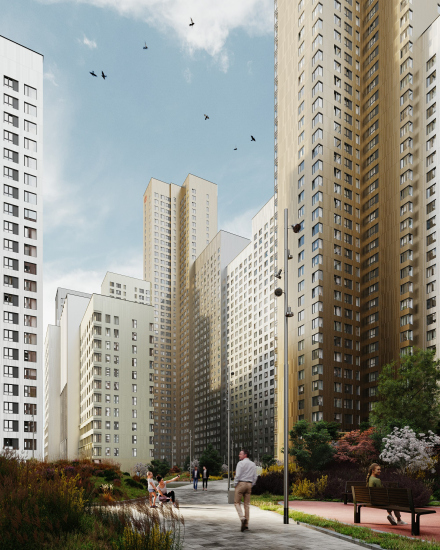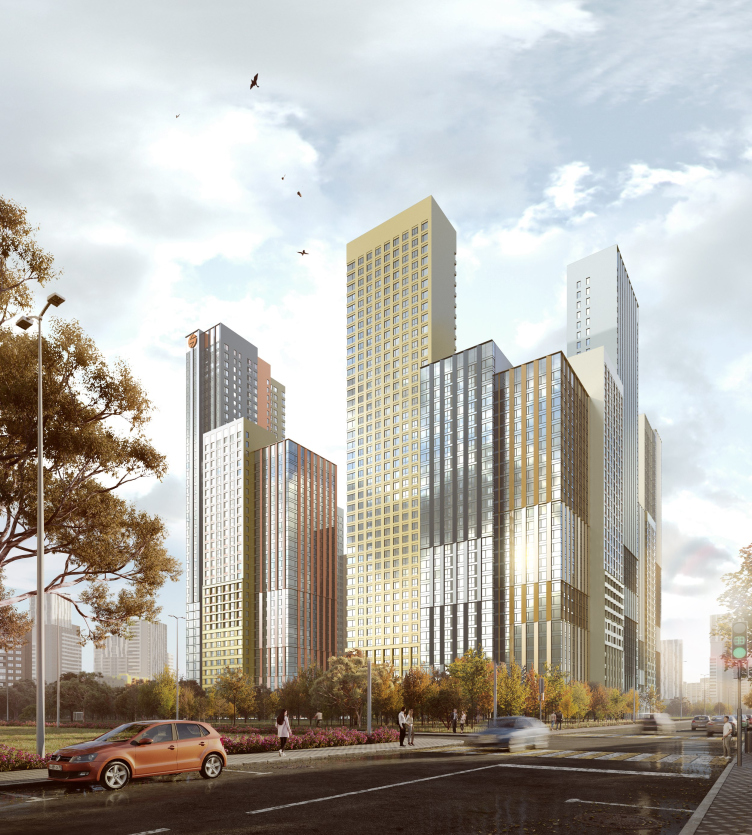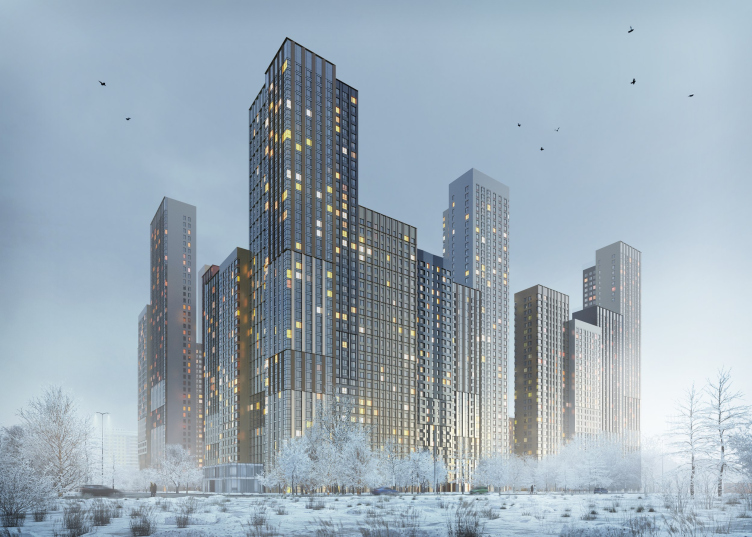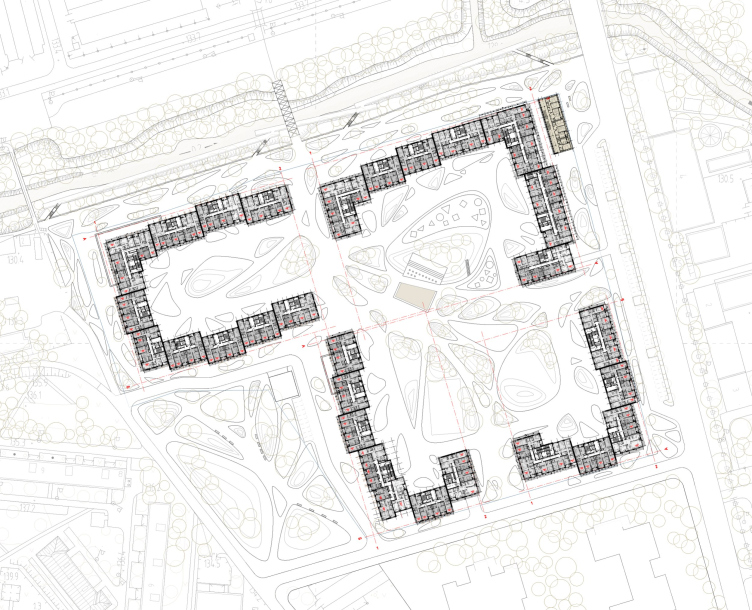The solution, proposed by Aleksey Ginzburg Architects, is essentially a hybrid of the two.
The first feature that sets it apart is that the volumes are not governed by a rigid orthogonal grid. The sections form long “daisy chains” running along the perimeter of the territory, yet all the volumes are slightly shifted in respect to their neighbors. The contour is lively and free, and the self-contained character of each of the towers – from 40 to 150 meters high – is deliberately emphasized. This is not so much a “front wall” of the city block, as a group of towers, standing in a row.
Sky Garden housing complex. The master plan
Copyright: Ginzburg Architects
Sky Garden housing complex
Copyright: Ginzburg Architects
The architects say that their solution is context-based. The land site is an irregular L, but it is spacious. It is a former industrial park, the territory of the former Tushino Reinforced Concrete Plant. Next to it, further north, there are many other industrial parks, but southeast of it, two large companies are already developing the territory of the former Tushino airfield.
The immediate surroundings, however, consist of residential houses, both of the low-rise postwar kind and prefabricated nine-story ones, as well as two schools and a clinic. South of the area, there are a few bus stops. The entire complex is surrounded by the semicircle of the Skhodnya River, which in the northern part comes really close to the complex boundary: there are two pedestrian and one automotive bridges thrown across the river.
Sky Garden housing complex
Copyright: Ginzburg Architects
Thus, the architects “tear” the contour of the building in four directions: to the river and the pedestrian bridge, to nine-story buildings and schools, to the postwar houses, and to the bus stops. Pedestrian flows are distributed – approximately – by the cardinal points and intersect in the spacious courtyard.
One should think that if the architects had followed the “classical” quarterly layout, they would have placed here at least four closed circuits with private yards and a cross of public boulevards between them. But in this case, the density of the construction and the height is such that a freer composition turned out to be a better choice – the authors immersed the boulevards into the courtyard space, although they did not completely dissolved them in it, but rather embedded in an asymmetric parametric grid. When viewed from above, the “fifth facade” will look like a bionic network: either streaks on a leaf, or a maybe a mycelium.
Sky Garden housing complex
Copyright: Ginzburg Architects
The four yards came together to form a space that is half private and half public – a park that relates to all the buildings of the housing complex. Of course, in the eyes of a “spoiled” Muscovite, a “park” is something that’s really big, like Losinka or Sokolniki, but here it does feel like a “park”. The yard righteously echoes the river banks.
We will remind you that the “glued” towers vary in their height – this allows you to avoid the monotonous effect of a “Great Wall of China”, and it also allows to implement the principle of recognizable blocks of flats.
Meanwhile, the height does not change arbitrarily, but depends on the location of the tower: the buildings grow lower closer to the gaps, and they grow higher closer to the corners – not symmetrically, but according to a pattern that takes into account a number of factors. For example, the highest buildings are situated at the corner near the automobile bridge, at the city highway. This is one of the “facades” of the complex.
The facades combine vertical lines and squares, while the materials vary from white and dark-gray to metal or natural tones – gold, silver and copper. However, you will not see terracotta or stone here – the image is eventually “metallic” and glittering.
In many cases, vertical volumes are intersected by wide horizontal belts of the same shade, but with a different pattern: somewhere there is one insert, somewhere there are two, somewhere there are none at all (in the courtyards there are none at all), and they are located at different heights, which knocks down the scale and enlivens the composition at a level slightly higher than the human line of vision.
Sky Garden housing complex
Copyright: Ginzburg Architects
Sky Garden housing complex
Copyright: Ginzburg Architects
There are 19 types of apartments in the complex, ranging from 24 to 120 square meters. The peculiarity is that each apartment has a recessed balcony with a place for the air conditioning unit, and, in addition, all the apartments with an area of more than 54 square meters, that is, having two or more rooms, have a two-way orientation for through ventilation and various lighting during the day. The decision is modernist and humane; it is now accepted to refute the need for through ventilation and the value of enhanced insolation for hygiene; which may be true. However, it is difficult to deny that both are pleasant for life. In addition, the two-sided orientation and moderate, not very deep proportions of the rooms made the proportions of the towers slender and elegant. There are no stair and elevator cores in the center of the volume: they are all adjacent to the courtyard facades, so, again, the buildings remain slender.
Sky Garden housing complex. The plan
Copyright: Ginzburg Architects
The architectural solution of a residential complex of such high density and scale is always quite a difficult task. You need to fit in everything you need and overcome the pressure of scale, as well as the two main temptations of monotony and diversity. But the hybrid typology – a form “on the verge” of two well–known approaches – allowed the architects to find a reasonable balance between pragmatics and recognizability of the architectural solution.
Currently, the construction of the first stage and the design of the second is underway.
Sky Garden housing complex
Copyright: Ginzburg Architects



